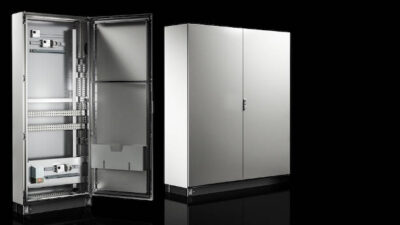Accessing timely information is a top concern when collaborating with trading partners. Having a professional to turn to—one with a long tradition of creating standards that eliminate manual processing and movement of business information among those partners—is a manufacturer's B2B “Ace in the Hole.
Accessing timely information is a top concern when collaborating with trading partners. Having a professional to turn to—one with a long tradition of creating standards that eliminate manual processing and movement of business information among those partners—is a manufacturer’s B2B “Ace in the Hole.”
That pro can be found in RosettaNet, the independent consortium dedicated to development and deployment of standard electronic business interfaces.
Across industries, customers and suppliers tend to use disparate systems, a process that complicates the B2B integration process. This issue is confirmed in a survey of 270 attendees at RosettaNet’s Global Community Summit . Responses validated the business value of B2B integration for increased operational efficiencies, higher customer satisfaction, and gradual investments in new technology—namely XML.
The survey—conducted by RosettaNet and supply chain management provider E2Open —cites increased business process efficiency as the key driver for electronically connecting to trading partners. Other drivers include adherence to customer requirements, and compliance with industry or legal standards.
“Whenever manual steps are removed and human intervention is reduced, the quality of data improves,” says Lorenzo Martinelli, a company VP for E2Open. “Once users are confident of the information, they must determine what to do with it.”
Customer and supplier integration is essential since many trading partners require the data in a specific format, or ask for it to be customized for their purposes. E2Open provides the tools to standardize such collaboration.
“With the advent of cell phones, users had to worry about which network they were using if they wanted to reach a trading partner,” says Martinelli. “Today users should not have to consider which procurement application their supplier or customer is using.”
Harvinder Sembhi, a VP for electronics contract manufacturer Celestica, says nearly 320 suppliers are up and running across three sites using E2Open’s on-demand supply chain service.
In point-to-point integration, users must do their own data translations, requiring them to create a map for each request. With E2Open, maps are customized and automatically translated into the proper format for each transaction. “Users can take orders from Asia or China, and the system automatically converts it to their own language.”
Survey results also show a gradual technology migration trend: a 20-percent reduction in usage of EDI, and an XML increase of 33 percent.
“EDI is cost-prohibitive for those not already EDI-enabled,” says Martinelli. “Starting from scratch with XML could be a cheaper and faster method for B2B integration for some companies.”
Typically, purchase orders and advanced ship notices are the first two processes users enable when collaborating with trading partners via EDI, says Martinelli. XML technology is used for newer capabilities, such as viewing work-in-process or quality test data from suppliers.
Celestica , a Toronto-based electronics contract manufacturer, was thinking e-procurement when it rolled out the Software-as-a-Service system from E2Open. When dealing with 72,000 active part numbers on a daily basis, Celestica found its traditional purchasing communication—fax, email, and hard copies—to be outdated.
“The cost of EDI was prohibitive for many of our overseas suppliers,” says Harvinder Sembhi, a Celestica VP. “Lower-cost companies don’t have the funds for EDI, so it makes more sense to start with XML.”
Celestica wanted its suppliers to try an exception-based method, which removes latency from the supply chain. Exception messages are sent to users, alerting them when a problem arises—e.g., a supply, quantity, or price discrepancy.
“If buyers receive alerts about a shipment date error, they can proactively solve it before the shipment is sent,” explains Sembhi.
Since last October, E2Open has rolled out solutions in three Celestica plants—two in China and one in Thailand. Nearly 320 suppliers are up and running across all three sites, and plans are under way to manage forecasting and some transaction capabilities. Sembhi says 58 percent of Thailand’s total spend flows through E2Open, although he hopes to increase this to 80 percent by the fourth quarter.
Celestica also plans to use E2Open for greater visibility downstream in the supply chain. By connecting its third-party warehouse hubs to the system, users will gain visibility into buffer inventory.
“By integrating E2Open with our ERP system, we will be able to see if we can commit to inventory before we own it,” concludes Sembhi.



